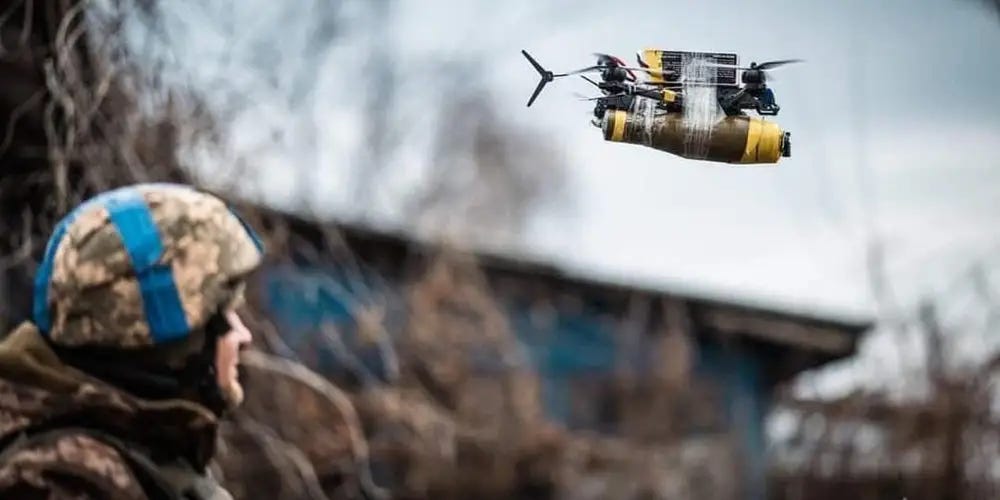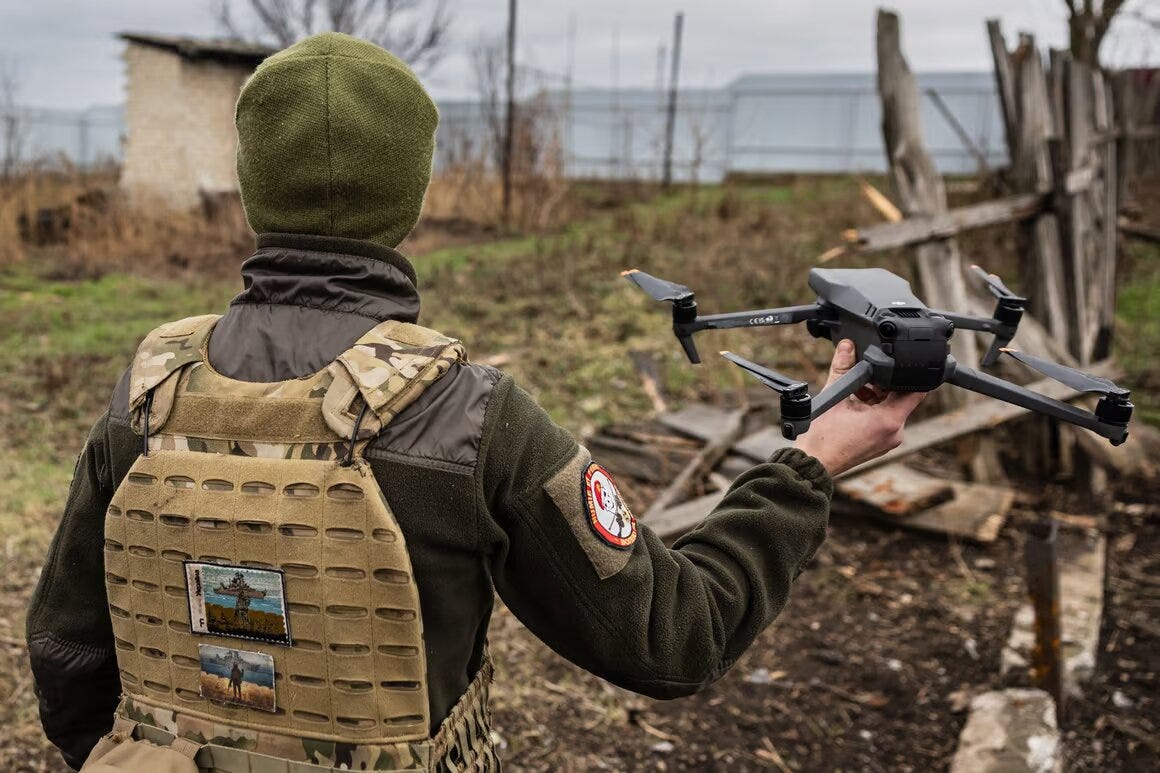Anyone who closely follows the war in Ukraine, especially the developments in battlefield technology and tactics will have noticed a strange juxtaposition in the fighting. On the one hand this appears to be a cutting edge modern war, where consumer drones, thermal technology and targeted long range missiles have revolutionised the battlefield and completely changed the nature of warfare. But at the same time, we have observed widespread trench warfare return to Europe for the first time since World War 1, with tried and tested trench assault tactics remaining largely the same. In this article I will look at how the proliferation of consumer drones, as well as how thermal and infrared tech has dramatically changed some aspects of warfare. We will then move on to how eastern battlefield doctrine and constraints on Russian weapons and supply lines have meant that many aspects of day to day warfare seem to be a throwback to the 20th century rather than the cutting edge 21st century war we often see aspects of.
Part one: Commercial Drones
Commercial drones have drastically changed the nature of the battlefield for a few main reasons, primarily their very low cost. Commercial drones have found a plethora of uses in Ukraine, from tracking infantry squads to finding well concealed and camouflaged sniper teams with ease. However, two use cases have been by far the most common in recent months, and as a result we have seen the drastic increase in the popularity of two types of drones. The first that we will discuss is the “Mavic” type. Although Mavic refers to a specific drone model produced by the Chinese commercial electronics company DJI, soldiers refer to any high altitude drone that is relatively quiet and slow moving as a “Mavic” (it should be noted that the vast majority of these drones are in fact the original DJI model). In the initial stages of the war Ukrainian and then Russian combat engineers took advantage of a small LED on the underside of the drone that can be turned on and off from the controller. Engineers quickly realised that if a 3D printed cage is fitted to the underside of this drone with a Photodetector facing the LED, this feature can be used to release munitions from the drone without much additional cost or time. This strategy is very cost effective (Around $1500 USD for a fully modified Mavic 3) and the drones with these modifications can easily be mass produced. However there are several drawbacks. The Mavic is not an especially slow drone, it has a max speed of around 21 m/s, but the intended use case for it is as a camera drone made for taking high quality footage. This means that in order for it to drop munitions on an enemy target, the drone pilot must try and balance the payoffs of dropping from a lower altitude with greater accuracy and dropping from a higher altitude with an increased chance of catching your target by surprise. This vertical drop method was somewhat effective against soft targets, for example an infantry squad holed up in a trench, but much less effective against vehicles or faster moving targets. This method also was highly susceptible to wind and other environmental factors, as a payload could easily be blown several metres off course by a gust of wind during its approximately 5-10 second flight after being released by the drone. However a role that Mavic drones have flourished in is targeting. The most recent Mavic drones are equipped with 7x zoom lenses alongside standard focal lengths, meaning that they can easily observe enemy targets and positions in high detail from several hundred metres away. The Mavic’s limited payload delivery functions as well as its long flight time and telephoto abilities have cemented its role as a targeting drone. This means that a Mavic pilot will generally look for enemy positions and targets from a high altitude, and designate targets for artillery, rocket fire or other drones to attack.
As the Mavic has fallen away from its role as a frontline payload delivery device, another, very different type of drone has taken its place: the FPV racing drone. FPV stands for first person view, and refers to the VR style goggles that drone pilots use to fly these drones. This need for greater immersion when flying these drones is not simply to improve the experience of the pilot, but is a necessity when piloting these drones as they travel at speeds of around 150 km/h or 42m/s with ease. They are capable of precise movements, even at high speeds, making them highly suited to delivering small payloads to moving targets, and their precision means that they can often make up for their reduced payload size with accuracy. A particularly terrifying example of this was a recent video that was released by the K2 Combat Group of the 54th Separate Mechanised Brigade that showed footage from the onboard camera of a FPV drone flying through an open hatch of a Russian tank, before immediately detonating inside the tank and, according to the ZSU, “Liquidating it’s contents”. These drones are usually even cheaper than Mavic drones, costing around 700-1000 USD.

Recently these two types of drones have increasingly been used in conjunction with each other, especially by the ZSU. In recent interviews, Ukrainian soldiers describe how in an area of intense fighting, there will be around 5 or 6 loitering FPV drones for every 1 Mavic drone. The Mavic will perform an observation role from several hundred metres away, and designate targets to FPV drones that sit around the battlefield, on top of buildings, trees or in open fields. Once the Mavic pilot designates a target and approval is given, these FPV drones spring into action. Soldiers have described how this often develops into a race between FPV pilots, all attempting to traverse the battlefield and deliver their payload before other pilots reach the target first. FPV drones are also effective psychological warfare tools, their distinctive high pitched whine and ability to fly indoors, though tunnels and inside vehicles terrify soldiers. Soldiers are also limited in what they can do to counter these drones. Attempts to shoot them down with small arms are usually ineffective and stories told by soldiers who claim to have shot them down are often recalled with pride due to the skilled marksmanship and element of luck that it takes to hit a small, fast moving target several hundred metres away. Additionally, it is difficult to identify a drone as Ukrainian or Russian, an anonymous former British army soldier who is now fighting in Ukraine told the story of his best shot, hitting a moving FPV drone as it was flying at high speed overhead, taking it down with a single shot, however, unfortunately for him, after retrieving the downed drone they discovered that it was Ukrainian.





